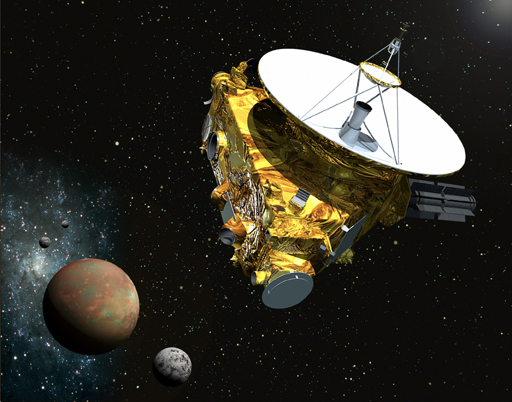With Pluto encounter operations now just a year away, the New Horizons team has brought the spacecraft out of hibernation for the first of several activities planned for 2014.
Mission operators at the Johns Hopkins Applied Physics Lab in Laurel, Md., “woke” New Horizons on Jan. 5. Over the next two weeks the team will test the spacecraft’s antenna and repoint it toward Earth; upload commands into the onboard Guidance and Control and Command and Data Handling systems, including a check on the backup inertial measurement unit and update of the spacecraft’s navigational star charts; and conduct some navigational tracking, among other routine maintenance duties.
“We’ve had busier wakeup periods, but with long-distance Pluto encounter operations starting only a year from now, every activity is important,” says APL’s Alice Bowman, New Horizons mission operations manager.
The pace of operations picks up significantly later this year. In late June the team will wake New Horizons for two and a half months of work, including optical-navigation (“homing”) activities using the Long-Range Reconnaissance Imager (LORRI) to refine the probe’s course to Pluto. The team will also check out the spacecraft’s backup systems and science instruments; carry out a small course correction to trim up New Horizons’ approach trajectory and closest-approach timing at Pluto; and gather some science data by measuring the variations in Pluto’s and Charon’s brightness as they rotate.

Artist’s concept of the New Horizons spacecraft as it approaches Pluto and its three moons in summer 2015. The spacecraft’s most prominent design feature is a nearly 7-foot (2.1-meter) dish antenna, through which it will communicate with Earth from as far as 4.7 billion miles (7.5 billion km) away. Image credit: Johns Hopkins University Applied Physics Laboratory / Southwest Research Institute (JHUAPL/SwRI).